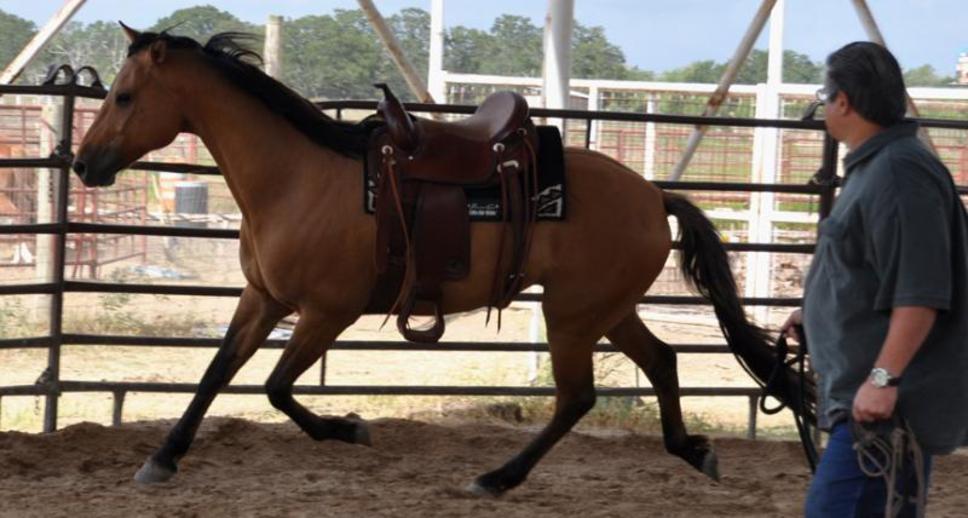
Working with horses...Naturally!
While natural horsemanship comes in many forms and interpretations these days, the basis of learning how horses think, how they perceive things and why they react is still a very important part of learning about them. Many of the techniques used by natural horsemanship practitioners have ancient roots. The idea of working sympathetically with the horse's nature goes back at least to Xenophon and his treatise "On Horsemanship", which has influenced humane practitioners of horse training in many disciplines, including both natural horsemanship and dressage. This type of approach helps you in any venue you choose to enjoy with your horse, even if you just have companion horses and do not ride.
Working in the roundpen allows the horse free expression without any physical connection to the person. This helps the person notice what the reactions or responses are from influenced by body language, energy, intent or lack thereof. Roundpen work teaching the horse to focus on the handler and teaches the handler to pay more attention to how the horse is interpreting them.
On line work begins to deal with the actual physical connection between horse and human. The horse still reacts or response to the handler but now having to deal with the attached lead. This is where a horse learns to give soft responses to the pressure of the rope and the human learns how to give to or release the horse when a desired response is attained. This is the foundation for following the rein when riding.
The riding part encompasses many skills; showing the horse what his responsibilities are and teaching the student hers. Riders learn how use of the rein affects the feet and how use of the seat/legs affect the body. Learning to have an independent seat, soft hands, body control and confidence are all learned skills.
While natural horsemanship comes in many forms and interpretations these days, the basis of learning how horses think, how they perceive things and why they react is still a very important part of learning about them. Many of the techniques used by natural horsemanship practitioners have ancient roots. The idea of working sympathetically with the horse's nature goes back at least to Xenophon and his treatise "On Horsemanship", which has influenced humane practitioners of horse training in many disciplines, including both natural horsemanship and dressage. This type of approach helps you in any venue you choose to enjoy with your horse, even if you just have companion horses and do not ride.
Working in the roundpen allows the horse free expression without any physical connection to the person. This helps the person notice what the reactions or responses are from influenced by body language, energy, intent or lack thereof. Roundpen work teaching the horse to focus on the handler and teaches the handler to pay more attention to how the horse is interpreting them.
On line work begins to deal with the actual physical connection between horse and human. The horse still reacts or response to the handler but now having to deal with the attached lead. This is where a horse learns to give soft responses to the pressure of the rope and the human learns how to give to or release the horse when a desired response is attained. This is the foundation for following the rein when riding.
The riding part encompasses many skills; showing the horse what his responsibilities are and teaching the student hers. Riders learn how use of the rein affects the feet and how use of the seat/legs affect the body. Learning to have an independent seat, soft hands, body control and confidence are all learned skills.
Located in Georgetown, Texas 512.868.7638 learn@eququest.com

